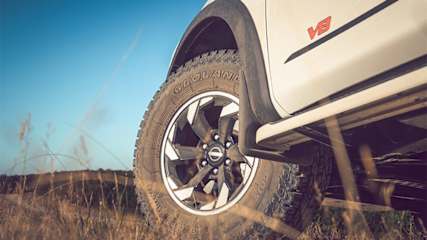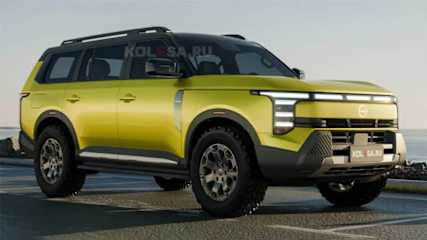'This is the car to buy now': Nissan boss' shock admission before 2027 Nissan Y63 Patrol lands in Australia to tackle 2026 Toyota LandCruiser 300, BYD Denza B8 and Land Rover Defender
By Byron Mathioudakis · 16 Jul 2025
The head of Nissan in Australia has revealed he would buy the latest version of the ageing Y62 Patrol now rather than wait for its Y63 replacement to arrive late next year, because there will not be another one like it.Nissan Oceania Vice President and Managing Director, Andrew Humberstone, believes that, as the last of the affordable V8 SUVs on the market, putting one away for a rainy day may end up being a prudent investment.“Personally, selfishly, this is the car to buy, now,” he said.“That’s the one I would keep and not sell, because I think residual values are going to go through the roof, because I think that’s what people are going to want… if I was into any sort of boating, or any sort of camping or any sort of boating.”Humberstone may have a point, with Patrol sales down only 4.2 per cent year-to-date in Australia, compared to nearly 38 per cent for the much-newer (and V6 twin-turbo-only) Toyota LandCruiser 300, in an Upper Large SUV segment that has stumbled 27 per cent.While the international car-industry veteran is quick to point out the advances that the upcoming all-new Y63 Patrol with its twin-turbo V6 will have over its 15-year-old Y62 predecessor, he admits that the V8 will be missed.“The Y63 is an amazing vehicle,” he explained. “But I’m old-school still. I have to manage my conscious with one electric car and then one V8, and then I can say I’m neutral, I’m doing my bit for the environment in that way.”So, why is Nissan even releasing an updated old Patrol when a new one is already on sale in other parts of the world, including in the Middle East and in North America (as the Nissan Armada)?Humberstone revealed the facelift coming out at this time was always part of a larger plan, to maximise its appeal and give consumers both existing and new-to-the-series a reason to revisit the Y62 in 2025… especially now that Toyota does not offer a V8-powered LandCruiser as an alternative.“It was a little bit more strategic, because at the end of the day, we were aware of our Y63, we were aware of the kind of demand that would generate, and we wanted to optimise on the specification,” he said.Furthermore, Nissan timed the MY25 Patrol launch very carefully, so there is still up to 18 months before the Y63 Patrol – which has yet to be produced in right-hand-drive guise – arrives in Australia, making the purchase now and then again for another one from 2027 justifiable in the minds of consumers as well as commercially prudent for the carmaker.“On the run out of the V8, we were aware of what the competitors were doing,” Humberstone said. “We had a pretty good idea of what was happening with the V8 space in the V8 market.“So, we knew we'd have a window of opportunity, and we wanted to optimise on the (partly redesigned for MY25) dash, and the technology on the vehicle as best as we could.”Nissan’s big step up in ownership, that includes the availability of a conditional 10-year/300,000km warranty and lower-priced servicing, as well as having an in-house finance arm to facilitate the buying process, have also played a part in the MY25 Patrol strategy.“So, building up the spec, arguably giving the best product, or the best version of the Patrol V8 at the end of its life cycle is…strategic,” Humberstone added.
.jpg)






.jpg)

.jpg)